It is 1961. Despite recent efforts undertaken by the CIA at the Bay of Pigs, Fidel Castro has been in power for two years, and Ana Mendieta and her older sister Raquelin are separated from their parents and flown from Cuba to the United States as part of Operation Peter Pan. Between 1960 and 1962, some 14,000 Cuban children would make this journey, precious cargo channelled out from their homeland towards the safety of something, anything, else. For the Mendieta girls, this would eventually take them to Iowa. When they first touched down in Miami, the 12-year old Ana knelt down on the tarmac and kissed it, crying ‘Freedom! Freedom at last!’ For her this soil, only separated from her home by a few hundred miles of sea, held a life-giving, transformative power.
This childhood anecdote is worth recalling in light of Ana Mendieta’s subsequent artistic career, which spanned painting, performance, sculpture and film, before being brought to a brutal close with her premature death in September 1985. Throughout her life, Mendieta looked to the natural world as a productive site of memory, emotion and trauma, much like a human body. At the Gropius Bau, the exhibition ‘Covered in Time and History’ focuses solely on Mendieta’s film works, lately restored from their original Super 8 format and converted into the unflinching precision of digital 2K. It is a large show, spanning six rooms and gathering together 23 short films – their durational uniformity predetermined by her chosen medium’s inflexibility – alongside some rich photographic works. The films represent only a small fraction of those made by Mendieta over the course of her short life (104, in total), which nonetheless provide a clear document of the artist’s consistent efforts to establish some kind of connection, physical or spiritual, with the natural world.
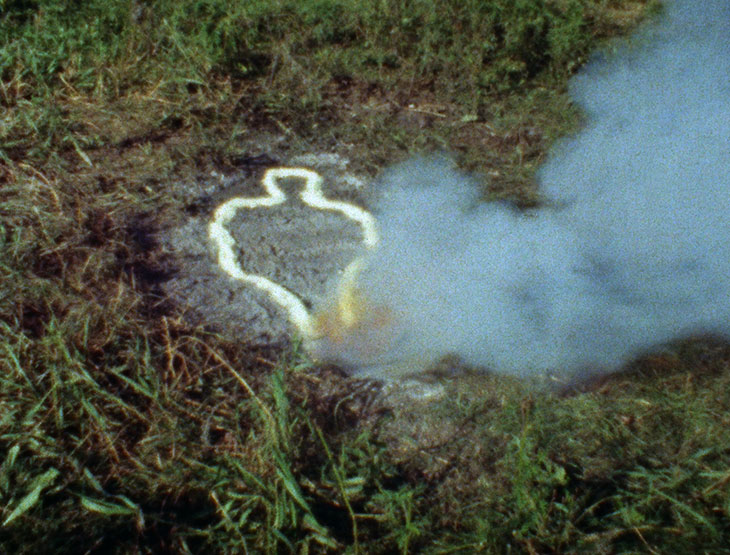
Untitled: Silueta Series (1978), Ana Mendieta. Photo: the Estate of Ana Mendieta Collection, LLC.; courtesy Galerie Lelong & Co.
Some of the works here are arranged chronologically, whereas others are more thematically ordered. One room presents a series of films involving blood. Another contains works on the theme of trees, while the final room predominately revolves around Mendieta’s fascination with water and its effects. For the most part – and as with her famous Silueta (Silhouette) series (1974–80) of bodily outlines carved into the landscape, featured in part here – Mendieta herself is largely absent or retreating. In Blood Sign (1974) we watch her from behind as she traces a rough outline of her body in blood against a white wall, before scrawling the words ‘there is a devil inside me’; in Corazón de Roca con Sangre (Rock Heart with Blood, 1975), the artist kneels naked beside a human-shaped imprint in swollen riverside soil, covers a rock in red paint and places it in the position of the heart, before lying face down in the recess. Even Blood Inside Outside (1975), in which a naked Mendieta faces the camera head-on while methodically covering herself in blood, can be seen as an act of disappearance: the specific (Mendieta’s body, her external appearance) submerged beneath the universal (blood, the vital fluid that circulates inside nearly all living creatures).
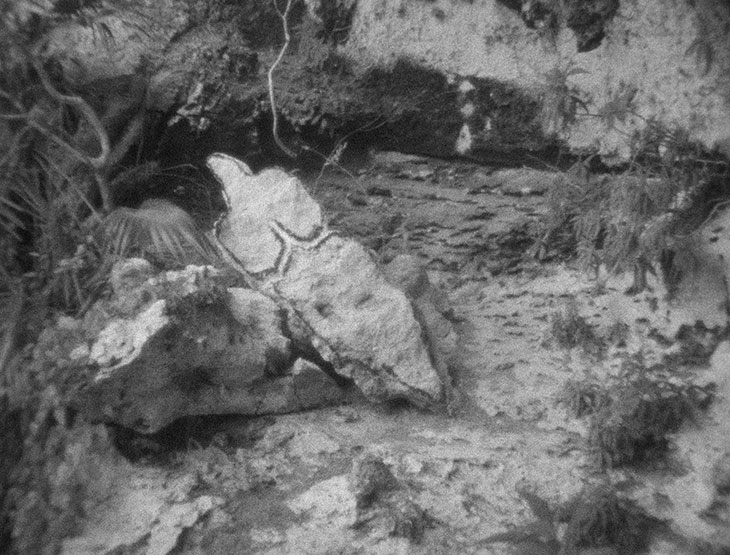
Esculturas Rupestres (Rupestrian Sculptures, 1981). Ana Mendieta. Photo: the Estate of Ana Mendieta Collection, LLC.; courtesy Galerie Lelong & Co.
Viewing these disappearances, one after the other, can be a repetitive experience. For all its educational merits, ‘Covered in Time and History’ mostly portrays Mendieta, who was a multifaceted artist, as something of a one-trick pony. The exhibition works best, by contrast, when it widens its scope: looking at how the film format interacts with sculpture and photography, for example. The final room presents one of Mendieta’s last film works, Esculturas Rupestras (Rupestrian Sculptures, 1981), shot in Cuba – she was the first (ostensibly) foreign artist granted permission to make work in the country. There, Mendieta carved strange corporeal figures into an embankment. The black-and-white film opens with an establishing shot, before gaining ground, over a course of rough cuts, towards these carvings. Filming the sculptures like this, Mendieta distances herself from the work: they might be the result of a freak turn of nature, or newly discovered scrawls from a primordial beyond. This sense of alien discovery is heightened by the photographs of the sculptures that hang alongside the projected film. It was looking at these that I finally understood, in a dizzying rush, how Mendieta saw humanity’s relationship to the natural world: how nature is shaped in our likeness while remaining an unknowable mystery.
‘Covered in Time and History: The Films of Ana Mendieta’ is at the Gropius Bau, Berlin, until 22 July.
Unlimited access from just $16 every 3 months
Subscribe to get unlimited and exclusive access to the top art stories, interviews and exhibition reviews.

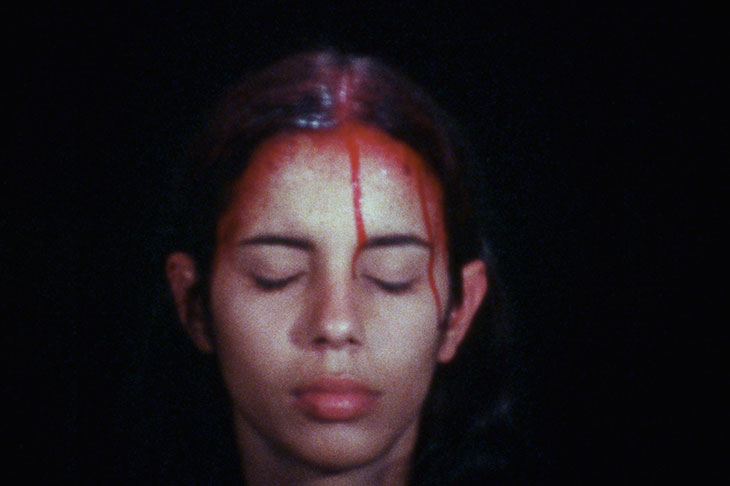
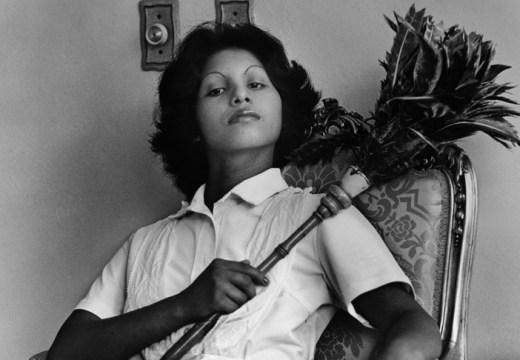

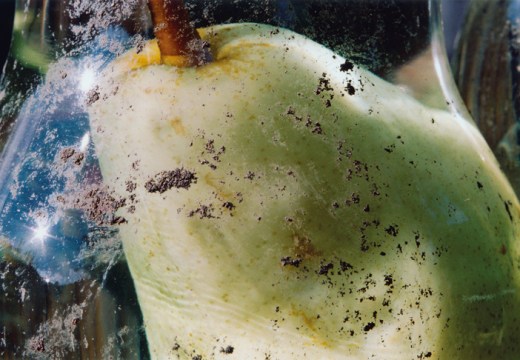









![Masterpiece [Re]discovery 2022. Photo: Ben Fisher Photography, courtesy of Masterpiece London](http://www.apollo-magazine.com/wp-content/uploads/2022/07/MPL2022_4263.jpg)
Why are fathers so absent from art history?